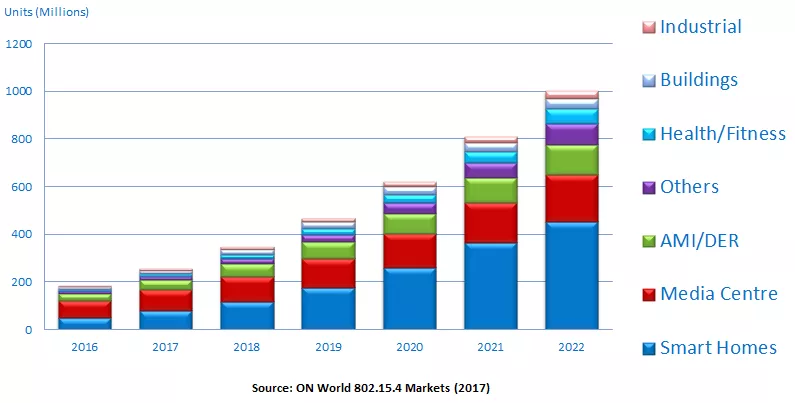LOT world’s introduction to communication standards
Thread: is an ipv6-based, low-power mesh networking technology designed to provide secure, seamless communication for Internet of Things devices. Originally designed for smart home and building automation applications such as appliance management, temperature control, energy use, lighting, security, and more, Thread has expanded its scope to include broader Internet of Things applications. Because Thread uses 6LoWPAN technology and is based on the IEEE 802.15.4 mesh networking protocol, Thread is also IP addressable, providing efficient communication between low-cost, battery-powered devices as well as cloud and AES encryption.
In order to accelerate the popularity of Thread protocol, Nest Labs (a subsidiary of Alphabet/Google), Samsung, ARM, Qualcomm, NXP Semiconductor/Freescale, Silicon Labs and other companies formed the “Thread Group” alliance in July 2014. To promote Thread as an industry standard and provide Thread certification for member enterprise products.
Bluetooth: A wireless technology standard that uses 2.4-2.485 GHz ISM band UHF radio waves, based on data packets, with a master-slave architecture, to realize short-distance data exchange between fixed devices, mobile devices and building personal domain networks. Managed by the Bluetooth Technology Alliance (SIG), IEEE lists Bluetooth technology as IEEE 802.15.1, but it no longer maintains the standard and has a network of patents that can be issued to compliant devices. Bluetooth uses frequency-hopping technology to split the transmitted data into packets that are transmitted separately over 79 designated Bluetooth channels. Each channel has a bandwidth of 1 MHz. Bluetooth 4.0 uses 2 MHz pitch and can accommodate 40 channels. A good quality wireless Bluetooth headset battery will last 2-3 years, usually a few weeks.
Wi-SUN (Wireless Smart Ubiquitous Network) technology is based on the open specification of IEEE 802.15.4g, IEEE 802, and IETF IPv6 standards. Wi-SUN FAN is a mesh network protocol with ad-hoc networking and self-healing functions. Each device in the network can communicate with its neighbors, and messages can travel very long distances between each node in the network. Wi-SUN transmission technology is characterized by remote transmission, security, high scalability, interworking, easy construction, Mesh network, and low power consumption (Wi-SUN module battery life can be used for as long as ten years). It is widely used in communication devices such as smart electricity meters and home intelligent energy management (HEMS) controllers. It is also conducive to building a wide-area large-scale Internet of things.
Taking all of this together, we think it would be very helpful to the industry to provide a set of short distance reference design modules that are easy to develop and feature data communication security considerations. Among the many IEEE 802.15.4 standards, such as ZigBee Pro, Thread and RF4CE, we find Thread has the most potential for development for the following reasons: (1) Supported by big companies such as Google, Arm, and Samsung, Apple joined Thread in 2018. (2) IP-based protocol, the integration of software communication protocol is very easy to achieve. (3) Devices that are highly standardized, highly interoperable, highly secure and suitable for battery powered mode. The following is a statistical table of market development forecast.
As you can see from the chart above, the adoption of related protocols based on IEEE 802.15.4 is expected to continue to grow, focusing on ZigBee and Thread, in particular Thread. In terms of application, according to the collation of market survey data, Smart Home, Medical Devices, Auto Metering, Smart Building and Industrial are the main application fields.

